#shell heritage art collection
Explore tagged Tumblr posts
Text
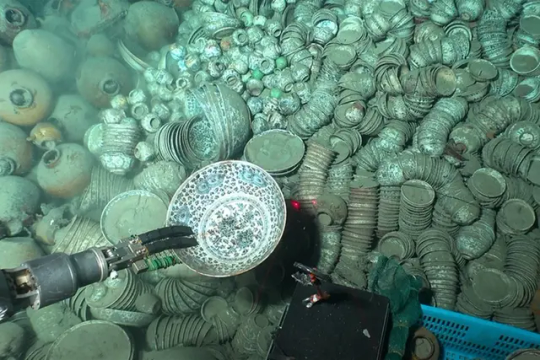
900 Artifacts From Ming Dynasty Shipwrecks Found in South China Sea
The trove of objects—including pottery, porcelain, shells and coins—was found roughly a mile below the surface.
Underwater archaeologists in China have recovered more than 900 artifacts from two merchant vessels that sank to the bottom of the South China Sea during the Ming dynasty.
The ships are located roughly a mile below the surface some 93 miles southeast of the island of Hainan, reports the South China Morning Post’s Kamun Lai. They are situated about 14 miles apart from one another.

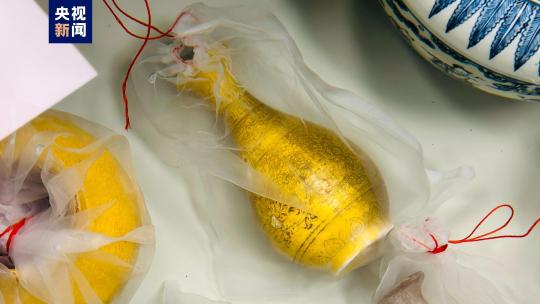
During three phases over the past year, researchers hauled up 890 objects from the first vessel, including copper coins, pottery and porcelain, according to a statement from China’s National Cultural Heritage Administration (NCHA). That’s just a small fraction of the more than 10,000 items found at the site. Archaeologists suspect the vessel was transporting porcelain from Jingdezhen, China, when it sank.
The team recovered 38 items from the second ship, including shells, deer antlers, porcelain, pottery and ebony logs that likely originated from somewhere in the Indian Ocean.
Archaeologists think the ships operated during different parts of the Ming dynasty, which lasted from 1368 to 1644.
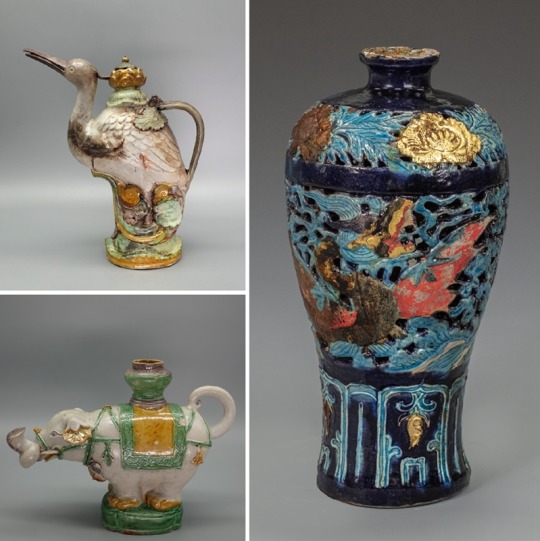
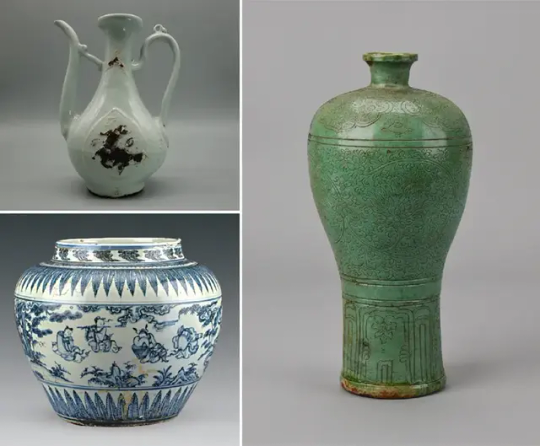
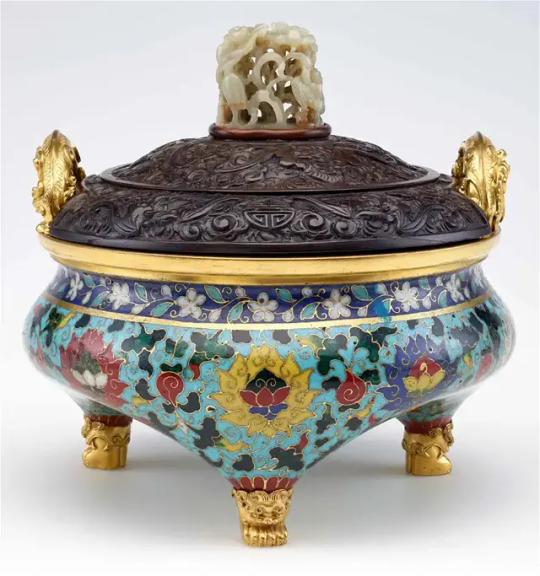
Many of the artifacts came from the Zhengde period of the Ming dynasty, which spanned 1505 to 1521. But others may be older, dating back to the time of Emperor Hongzhi, who reigned from 1487 to 1505, as Chris Oberholtz reported last year.
Archaeologists used manned and unmanned submersibles to collect the artifacts and gather sediment samples from the sea floor. They also documented the wreck sites with high-definition underwater cameras and a 3D laser scanner.
The project was a collaboration between the National Center for Archaeology, the Chinese Academy of Science and a museum in Hainan.
“The discovery provides evidence that Chinese ancestors developed, utilized and traveled to and from the South China Sea, with the two shipwrecks serving as important witnesses to trade and cultural exchanges along the ancient Maritime Silk Road,” says Guan Qiang, deputy head of the NCHA, in the agency’s statement.
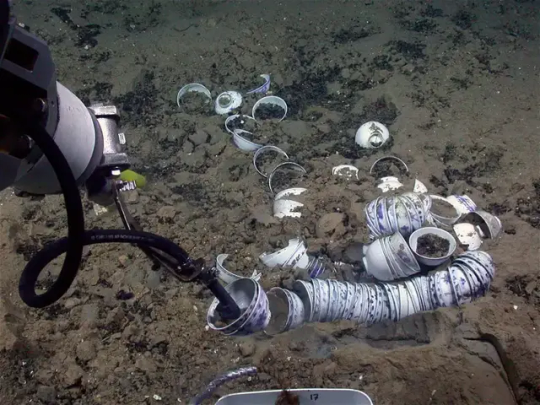
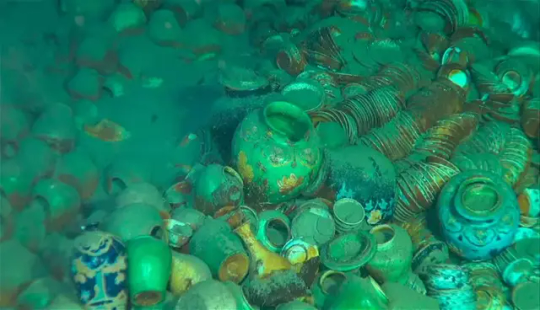
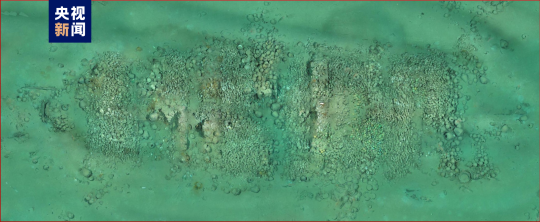
During the Ming dynasty, China’s population doubled, and the country formed vital cultural ties with the West. Ming porcelain, with its classic blue and white color scheme, became an especially popular export. China also exported silk and imported new foods, including peanuts and sweet potatoes.
The period had its own distinctive artistic aesthetic. As the Smithsonian’s National Museum of Asian Art writes, “Palace painters excelled in religious themes, moralizing narrative subjects, auspicious bird-and-flower motifs and large-scale landscape compositions.”
The shipwreck treasures aren’t the only recent discoveries in the South China Sea, according to CBS News’ Stephen Smith. Just last month, officials announced the discovery of a World War II-era American Navy submarine off the Philippine island of Luzon.
By Sarah Kuta.




#900 Artifacts From Ming Dynasty Shipwrecks Found in South China Sea#island of Hainan#Ming dynasty#shipwreck#ancient artifacts#archeology#archeolgst#history#history news#ancient history#ancient culture#ancient civilizations#ancient china#chinese history#chinese art#ancient art
564 notes
·
View notes
Text
Hidden Treasure
I put out a poll, and the people have loudly spoken. It's still up for a few hours, since I can't make polls last shorter than 24 hours, but there's a very clear winner.
Enjoy your food, y'all.
You can check out my other works with the links here:
Wrath of the Wishmaster
Touch of Light
Memories of the Homeland
Word Count: 3,000
Scarab had known for a long time that he was not what anyone would describe as pleasant to look at. That was something his coworkers had made certain he understood.
He knew bugs were not considered beautiful up close. There were parts people liked about them, the parts that get pinned and displayed in collections. The wings and carapace often shimmered with colors found nowhere else.
Maybe that's why his shell was the only part Scarab didn't feel the need to hide.
People admired it like a piece of art. They'd ooh and aah and admire from a distance.
Only from a distance.
Because people's admiration of bugs tended to stop once you get close enough to notice details.
No one liked the micro hairs in his joints. No one liked how he seemed to click and clack when he moved, like a doll. No one liked his needle-like claws that always seemed very slightly sticky.
And no one liked his face.
When he had first joined the pantheon, it was one of the first things he learned.
His face was called a lot of things. Unsightly. Unpleasant. Creepy. Gross.
His eyes were called too big. Too wide. Too intense a stare for people to handle.
His mouth was called disgusting. A horror show. Nightmarish.
When he had antenna, they were called unsettling with how they twitched and moved seemingly randomly.
He'd heard all of these things and more, both long before and long after he donned the mask.
No one liked eating near him, because no one wanted to see his proboscis and mandibles. No one liked walking next to him, because no one wanted to hear his odd clicking joints or an accidental chirp. And certainly no one liked looking him in the eye, because no one wanted to feel his stare of his too-wide eyes.
So no one sees his face, unless it's to intimidate. Because that was its only acceptable use, these days.
Scarab had accepted all of these factors long ago. He had accepted that companionship was off the table for him amongst the gods. The parts of him that would've made him preen back home are now objects of scorn and disgust. He accepted he was meant to be scorned, and it just made his job as Auditor simpler.
Which is why he was utterly baffled by Prismo and his behavior towards him.
Because Prismo threw everything he'd ever been taught about the gods out the window.
Scarab had been dreading his punishment as Prismo's assistant. Part of why he worked so hard as a God Auditor was so he had to spend as little time with other gods as possible. As much as he was used to their insults and disgust, it didn't mean he wanted to stick around and take them. But now, he was trapped, in a tiny room, with nothing but him and a Wishmaster he had trapped in a cube and tried to destroy. Prismo had more reason to hate him than almost anyone else.
But Prismo seemed more fascinated than revolted by his insectoid features. He encouraged them, even.
Eons of being trained out of his heritage, erased by a pink dream shadow, and an ounce of kindness and understanding.
They'd adapted to each other, quite thoroughly. Prismo had come to understand the many clicks and trills and chirps Scarab would make. He had given him liberty to make burrows into the Time Room walls to let him feel comfortable and safe. He'd even indulged his need to climb and crawl and explore in whatever little ways he can.
It was the first taste of true understanding Scarab had felt since he had left home.
And he hated himself for how much he craved it.
It was all Prismo's fault. Scarab had accepted his lot in life. He'd come to understand that friendship was not in the cards for him. But, there the Wishmaster was, throwing that understanding into chaos, filling his heart with stupid, poisonous hope.
Scarab was not meant for hope.
He was not meant for love.
The realization that that was what he was feeling sent the beetle spiraling for days. He of course did the not cowardly thing, totally didn't spend most of several days hiding in various holes he'd made and avoiding Prismo like the plague.
Totally not a cowardly move at all.
When he was over his minor freakout, he chose to swallow the poison down. Do what he always did. Take those feelings, squish them into the size of a marble, lock them in a box, and shove that box to the bottom of him mind.
It's nothing he hadn't done before. One must compartmentalize to cope with the existential dread of realizing you're never going home, everyone you've ever known or love has been dead for a very long time, and that home probably looks nothing like how you remember it. Shoving down complex emotions is easy.
He just had to remember one thing: Prismo has never seen his face.
It's the only reason he can think of as to why the Wishmaster isn't revolted. Because he hasn't seen the horror show of his face.
Scarab rationalized further. He's not appreciated or liked by Prismo, not really at least. He's just... an oddity. A novelty. Something to gawk at for a few centuries.
Prismo would drop the curiosity the second he sees what Scarab really is.
Because no one liked bugs. Not up close.
But, despite all his rationalizing, Scarab found himself stuck on what to do with it.
A part of him, a weak, spineless part of him, didn't want the kindness to stop. That part of him wanted to keep singing his native songs without scolding, to dig without scorn, to crawl without disgust. Even if he knew it was all novelty that would wear out eventually, the cowardly part of him wanted to prolong it for as long as possible.
But the other part, the one who gave up on being nice to gods a long time ago, wanted to rip the bandaid off, so to speak. That part of him wanted to show Prismo exactly what he's stuck with. It wanted him to drop the niceties already and behave the way gods are supposed to.
He gave you burrows and comforts on your bad days one side argued.
He'll grow bored or annoyed of you at some point, you don't want to get used to kindness by the time that happens the other retorted.
For weeks this debate raged in his head, his roommate none the wiser. He was starting to think this debate would just be the way of things for the time being.
Until, for the seemingly millionth time in his existence, Prismo threw a wrench into the works.
"Hey, Scarab!"
Uh-oh, Prismo sounded excited. That usually means Scarab is about to be dragged into something foolish, but he'd better just roll with it rather than deal with the aftermath later.
"Yes, Prismo?"
"I know you can't smell much, but can you, like taste stuff?"
Scarab blinked, confused at him.
"...Can we even eat in this form?"
"I mean, we don't really need to, but that's no reason to not enjoy snacks every now and then, right?"
Scarab held back the eyeroll. "No, I suppose not. To answer your question, if this form at all matches my corporeal body, then yes, I can taste things just fine."
"Awesome. Can I ask you a favor?"
"I have an inclination I don't have much of a choice, so, sure. What do you want?"
"Try this!"
And suddenly there was a pickle in Scarab's hand. He raised an eyebrow expectantly at the Wishmaster.
"I'm trying a new recipe. Usually I'd ring Cosmic Owl to taste test, but he's busy right now. Something about backed up tokens... Anyway, I figured I might as well ask my buddy!"
Scarab's brain finally caught up to the situation at hand. Prismo wanted him to eat this. In front of him. With no real way to turn around or conceal himself or his face.
Glob dammit.
"Uhm... I'll try it later..."
"Oh c'mon, please? I need to know if this batch is right before I try making more!"
Prismo was beaming at him. Smiling expectantly. When did that smile weaken him this much?
Okay, there was no way around this, not without deflating the Wishmaster's eagerness. Slowly, he opened the bottom of his mask, mandibles and proboscis unfolding clumsily. He kept his eyes off of the one watching him, eating the snack in silence. It was good, he'd give Prismo that, but everything he could say was drowned out by dread.
"I-It's uhm... It's good, Prismo."
There were a few beats of silence. Enough to make Scarab's fingers itch. Enough to draw his eyes back up.
Prismo was staring. At him. At his mouth, which he only just realized he didn't fold back up yet. Oh Glob.
"...Prismo?"
"Sorry, I just... I realized that's the first time I've seen you eat..."
Scarab couldn't place Prismo's emotion in his voice. He didn't stick around long enough to find out.
He clamped his mouth shut, his face plates making a loud cracking sound as they slammed closed in place. One hand unconsciously came up to cover it further.
"I-I'm sorry" he managed to squeeze out just before diving into the Time Room's lower levels.
Hide, hide, need to hide, need to protect, need to hide. He saw, he saw, he hates you, he saw your ugliest parts, he's revolted, hide hide HIDE!
He distantly heard Prismo yell after him, but it fell on clouded ears. Scarab made a mad dash; into the elaborate tunnels he had made throughout the basement, away from everything, away from him.
The beetle curled up into a deep, dark, forgotten corner of the Time Room and shook. He could hear his shell clicking together as he shivered, distressed chirps and trills punishingly falling from his mouth.
He saw. He saw and stared. He knows what you are. No one likes bugs. No one likes bugs like you. No one likes bugs up close.
Don't cry, don't cry, don't you dare cry. This is what you get for hoping. This is what you get for thinking anyone would want to be close to you. Gods squash bugs like you. You're lucky you haven't been yet. You're lucky you're not in a terrarium or pinned up on the wall somewhere.
That voice sounded suspiciously like some of the other gods. It's not like it mattered. He just hoped Prismo never paid attention to where Scarab was building his tunnels.
"Scrabs? Buddy, where are you?"
Scarab squeezed his mandibles tightly shut, trying and failing to block his distressed noises. He used to be so much better at holding these back, when did he lose so much self-control?
He couldn't even swallow down the embarrassing whimper he made when Prismo's bright blue eye locked onto him from the burrow's entrance.
"Scarab, bud, what's wrong dude?"
He wanted to hiss. His hindbrain was telling to hiss, scare away the threat, make him leave, protect the burrow, but none of it was happening. Because hissing would just expose his mouth again...
"...Go away, Prismo..."
"Was the pickle really that bad?"
"No you fool!"
"Then what's wrong? Something's wrong, and I don't wanna leave you hanging."
Something in Scarab's chest snapped.
"Just drop the act, Prismo! Stop pretending to like me already!"
"Woah, woah, what? What act?"
Rage, that was a much easier to understand emotion than the ones Scarab's been grappling with for weeks. Rage was easier to understand than this strange, vague attraction to the Wishmaster, rage was easier to understand than what possible reasons Prismo had to be nice to him, rage was familiar. He was desperate for a return to understandable. So he reveled in it.
"Stop trying to trick me, Prismo! I never thought of you as a cruel god, but you're shaping up to be one of the worst out there! Poisoning my mind with... with this nonsense!"
Prismo seemed to flinch at his tone. Good. Maybe that'll get him to stop whatever it was he was trying to do.
"Scrabby, what are you talking about? I thought we were buddies!"
"That's just what you'd want me to think, isn't it? Try to be my friend, fill my head with hope, so it all comes tumbling down harder. It's quite devious, I'd almost admire it. Tell me, is it something you came up with, or did one of the higher ups give you the idea?"
Prismo's eyes filled with... sadness. No, wait, that's not right... He should be getting angry! Disgusted!
"Scarab..."
"How dare you, Prismo. How dare you make me think I'm... that I'm something tolerable to be around. No one likes bugs, Prismo! I learned that lesson a long time ago. No one likes bugs, unless to pin them on the wall or pull their legs off! So stop pretending like you're not revolted by me and just get on with it!"
In one final act of defiance, he opened up his mask entirely, hissing and putting on full display his disgusting face. His mandibles clicked wildly, and his eyes bore right into Prismo's.
There, that ought to do it.
Except Prismo didn't seemed frightened. Just... sad. No, no, that's not what he's supposed to feel... No, no, that's not correct.
His hiss wavered, his voice starting to break.
He saw something pink move closer to him. He closed his eyes and braced himself. For what, he didn't know. But he knew to expect something.
Except, it didn't come. Tenderly, he opened one eye, to see Prismo's hand, about a foot away from him.
Just like he had done when he found him in the pickle cubby...
Don't cry don't cry don't cry don't... cry...
"S-Stop it... Please, just... stop..."
Prismo made no move closer. But he didn't pull his hand back either. Scarab flexed his clawed hand for a moment. He could swipe, and the Wishmaster would feel it but...
He couldn't...
He awkwardly reached his hand forward, letting it overlap into that vibrant purple. His entire form shivered at the contact, especially Prismo's thumb petting his claws.
"Don't you dare, Prismo... Don't you dare make me feel like... like you actually care..."
"I'm sorry no one's made you feel like that before."
Scarab's breath hitched. He shook his head. Don't cry don't cry don'tcrydon'tcrydon't-
"Can you come out of the hole, Scarab?"
The hold on Scarab's hand lightly tugged him forward. He wasn't sure why, but he let himself be tugged. Maybe he was just too tired to fight it anymore. Prismo at least gave him the privilege of staying mostly in the hole, just his head peeking out.
Which was... still open. Prismo was this close to his real face...
Scarab panicked and tried to close it back up, but a soft touch stopped him. A hand. A gentle one, on his cheek.
His cheeks felt wet suddenly. Had he started crying? When did that happen? Regardless, a thumb brushed the tears away, as Scarab was painfully aware of Prismo examining his face.
"You're, like, a little hidden treasure, you know that?"
"...What...?"
"Yeah. I like your eyes... And I'm sorry if me looking at your mouth earlier is what freaked you out... It's just... I'd never seen anything like it before."
"I apologize for inflicting it onto you..."
"Woah, that's not what I meant. Look, I don't know what anyone else might've told you, but I think they just had no taste. I think you're beautiful."
Scarab's mandibles clicked together, his eyes wide in sheer disbelief. Beautiful... Prismo called him beautiful...
"I... I-I... I don't know what to say..."
"Was that too forward?"
"N-No! I've just... never heard... anyone use that word to... describe me..."
"Are you kidding? Have you seen yourself? You're gorgeous. Elegant. I've always thought that. I'm just happy I have the complete picture."
Scarab wasn't sure how or if his dignity could survive this moment, but the sniffle he just made probably didn't help.
"Hey. Can I... try something?"
Scarab gave a tiny little nod. And then suddenly Prismo was kissing him. On his mouth. On his real mouth.
Kissing was not something that came naturally to Scarab. His species did not kiss, not in this way. But Prismo made it feel thoughtless. He closed his eyes and melted into it.
His mandibles even found use, gently cradling the Wishmaster's cheeks before they pulled away. Both of their cheeks were flushed.
"Did you... like that?" Scarab felt stupid for even asking, but his brain had turned to mush the second Prismo touched his cheek. The Wishmaster gave him a warm, kind smile, nodding.
It didn't even end there. The pink projection scooped the beetle up and began peppering soft little kisses all over his face. On his cheeks, between his eyes, on the joints of his mandibles, even right between where his antenna belonged.
The chirps Scarab made should've been a bit embarrassing, but he couldn't bring himself to care at the moment. Not in the first moment in eons he's felt treasured. Valued. Beautiful.
"May I try something?"
"Go ahead, gorgeous."
Scarab held Prismo's face, bringing their foreheads together. The beetle nuzzled that spot tenderly, chirps morphing into purrs almost. He privately mourned his antenna, which he could imagine carding through the Wishmaster's hair.
"Well, aren't you a sweet thing, Lovebug?
Scarab sputtered at that, face flushing a deep shade of blue. He loathed Prismo's smug chuckle as he kissed at his plated neck.
"You're terrible."
"Thanks." He let out a content sigh, nuzzling back against Scarab's head. "...Can we head back upstairs now? I think someone needs some more smooches on his gorgeous little face."
"You are actually insufferable. But... yes. I would like that."
The two stayed practically glued together for quite a while afterwards. There was a warmth now. A light, pleasant warmth, one that filled up the Time Room quite nicely as they cuddled. Scarab's chirps echoed softly off the walls as Prismo rubbed pleasant circles in his back.
And Scarab, for the first time in thousands of years, didn't feel the need to put his mask back on.
He didn't need to. Not for Prismo.
Who seemed to like bugs much more than one might expect.
#prohibitedwish#scarab x prismo#scarab the god auditor#prismo the wishmaster#prohibitedwish fanfic#Wrath of the Wishmaster
59 notes
·
View notes
Photo

Inevitably, they are rich. Extremely rich. Very, very rich. There are the things you can see: the castles, the country estates and the top-of-the-range cars with which to drive between them. There are enough horses to stable an entire stud. There are the exquisite jewels and enormous gems glittering at state banquets.
There are the things you can’t see, too: the sprawling tax-free hereditary property firms and the share portfolio acquired with their annual dividends. There are the works of art in the family’s private collections, rarely, if ever, publicly exhibited. So if we already know all this, why, on the eve of the coronation of King Charles III, investigate the wealth of the British royal family?
The first and simplest answer is that we simply ought to know. From 10 Downing Street to your local district council, the private finances of public servants are fair game for scrutiny where they are derived from public funds. If anything, the need for clarity here is greater: Rishi Sunak and the mayor take money from the public purse only temporarily. The life of the king is funded at taxpayer expense from birth to death.
The second answer is that, to be blunt, the Windsors act as if they have something to hide. The finances are murky as hell, and structured according to a formula that means their annual handouts can only go up, never down. For several decades their shareholdings were owned through a secret shell company at the Bank of England that was immune from national transparency law. The judiciary has sealed their wills from public scrutiny in secret hearings for the past century. This is not the behaviour of a family relaxed about the prospect of an informed citizenry.
The question is not merely how wealthy he is, the question is: how much of the king’s private wealth is derived from his public role? Only once Britain has an answer to that can it discuss the most important question of all: is this really a good way to spend public money?
Just how rich is he? The first problem with valuing King Charles III’s private wealth is that nobody knows precisely how rich he is, probably including him. Centuries of dynastic marriages with the British aristocracy and the royal houses of Europe have produced a family whose personal history is intertwined with Britain’s national story, and whose personal wealth is inextricable from their public position.
Take the Cullinan III and IV diamonds: two gems cleaved from the largest diamond ever discovered and presented as a gift from the South African government to the king’s great-grandmother Queen Mary in 1910. She wore them in her coronation crown and later as a pair in a brooch, which was left to the queen and then, presumably, the king (the family pays no inheritance tax as long as assets are bequeathed monarch-to-monarch). Elizabeth inherited the brooch in 1953 when Mary died, rather than in 1952 when she became queen. That indicates that the jewels are private. But by modern standards, they were clearly official gifts, so shouldn’t they be national heritage?
The second problem is the culture of extreme deference and secrecy that surrounds the royal family. This is partly a result of a media environment that covers the Windsors as dysfunctional celebrity aristocrats, rather than figures of serious political or constitutional significance. It has created a culture in which the royal institution itself is above normal standards of scrutiny, and where any remotely uncomfortable or probing question, no matter how valid, is ignored or dismissed by default.
Palace responses to questions about the king’s wealth ranged from “we’re too busy, perhaps we’ll respond next week” to “that’s really none of your business”. Questions about which jewels were owned by the state went unanswered. At one point the press office announced it was too busy to respond to further questions until after the coronation. Issued the same day as a palace statement about a celebratory quiche, this did not feel especially convincing. When pushed, the king’s spokesperson said: “Your figures are a highly creative mix of speculation, assumption and inaccuracy.”
The short answer is that, all told, we think Charles is worth at least £1.8bn. But it’s the longer answer, about how the king came to be worth so much, that is more interesting. Excursions to the parliamentary archives to dig out accounts for their hereditary estates unearthed cash payments to the king and his late mother dating back to 1952. That the king and his mother together pocketed more than £1.2bn in annual dividends from the estates (adjusted for inflation) was just as breathtaking as the discovery that they were paying themselves about 10 times more by the end of her reign than they were at the start.
Then you find the gifts. There are the mint-condition stamps from the governments of Cambodia and Laos that have, it appears, been subsumed into the family’s private stamp collection (estimated value: £100m). There are the works of art: an illustrated Bible from the modernist master Marc Chagall, or an etching from Salvador Dalí, both presented to Prince Philip during official visits overseas and both subsequently exhibited as being part of his “personal collection”. The monarchy’s own policy says that gifts from other monarchs “as a general rule” enter the national collection of state heritage, but two diamond necklaces given to the late queen by Saudi kings are mysteriously absent.
You also find lingering traces of the dark moments in Britain’s history. A 100-year-old memo in the British Library records the looting of the city of Lahore in 1849 and the theatrical presentation of plundered diamonds, rubies, pearls and emeralds to an ecstatic Queen Victoria. Once the pride of the British empire, the Koh-i-noor diamond now sits in a vault in some strange, disgraced hinterland: to wear it would be too offensive, to return it to its rightful owners too humiliating.
The historian Brooke Newman discovered a page in a 17th-century share register documenting the transfer of £1,000 of shares in the Royal African Company from the slaver Edward Colston to William III, the first of 14 monarchs to either cultivate the slave trade or harvest its profits. Perhaps revealingly, this was the one dimension of our inquiries to startle the palace into issuing an extended public statement describing how “profoundly seriously” Charles considered the matter.
Does the king need a state grant? The immediate political question flowing from the king’s wealth is obvious. If the family is this rich, why does it need an annual sovereign grant (currently £86m a year) from parliament? Why are the multimillion-pound payments from the hereditary estates not paid to the Treasury, or at least taken into consideration when setting their annual stipend? Alternatively, if the estates are genuinely private assets, why don’t they pay corporation tax?
After that come much more difficult questions about how a constitutional monarchy behaves in a modern society. Behind the pomp, the wealth and the opulence is a lurking sense of a monarchy designed for the more deferential age of the 19th century, when its purpose was fuzzy but simple: unite and represent the nation.
This, however, is a 21st-century coronation. Whether multimillion-pound salaries and disdain for difficult questions can really unite and represent the values of a modern democracy remains to be seen.
Daily inspiration. Discover more photos at http://justforbooks.tumblr.com
29 notes
·
View notes
Text

The artist formerly known as Prince
Inevitably, they are rich. Extremely rich. Very, very rich. There are the things you can see: the castles, the country estates and the top-of-the-range cars with which to drive between them. There are enough horses to stable an entire stud. There are the exquisite jewels and enormous gems glittering at state banquets.
There are the things you can’t see, too: the sprawling tax-free hereditary property firms and the share portfolio acquired with their annual dividends. There are the works of art in the family’s private collections, rarely, if ever, publicly exhibited. So if we already know all this, why, on the eve of the coronation of King Charles III, investigate the wealth of the British royal family?
The first and simplest answer is that we simply ought to know. From 10 Downing Street to your local district council, the private finances of public servants are fair game for scrutiny where they are derived from public funds. If anything, the need for clarity here is greater: Rishi Sunak and the mayor take money from the public purse only temporarily. The life of the king is funded at taxpayer expense from birth to death.
The second answer is that, to be blunt, the Windsors act as if they have something to hide. The finances are murky as hell, and structured according to a formula that means their annual handouts can only go up, never down. For several decades their shareholdings were owned through a secret shell company at the Bank of England that was immune from national transparency law. The judiciary has sealed their wills from public scrutiny in secret hearings for the past century. This is not the behaviour of a family relaxed about the prospect of an informed citizenry.
The question is not merely how wealthy he is, the question is: how much of the king’s private wealth is derived from his public role? Only once Britain has an answer to that can it discuss the most important question of all: is this really a good way to spend public money?
Just how rich is he?
The first problem with valuing King Charles III’s private wealth is that nobody knows precisely how rich he is, probably including him. Centuries of dynastic marriages with the British aristocracy and the royal houses of Europe have produced a family whose personal history is intertwined with Britain’s national story, and whose personal wealth is inextricable from their public position.
Take the Cullinan III and IV diamonds: two gems cleaved from the largest diamond ever discovered and presented as a gift from the South African government to the king’s great-grandmother Queen Mary in 1910. She wore them in her coronation crown and later as a pair in a brooch, which was left to the queen and then, presumably, the king (the family pays no inheritance tax as long as assets are bequeathed monarch-to-monarch). Elizabeth inherited the brooch in 1953 when Mary died, rather than in 1952 when she became queen. That indicates that the jewels are private. But by modern standards, they were clearly official gifts, so shouldn’t they be national heritage?
The second problem is the culture of extreme deference and secrecy that surrounds the royal family. This is partly a result of a media environment that covers the Windsors as dysfunctional celebrity aristocrats, rather than figures of serious political or constitutional significance. It has created a culture in which the royal institution itself is above normal standards of scrutiny, and where any remotely uncomfortable or probing question, no matter how valid, is ignored or dismissed by default.
Palace responses to questions about the king’s wealth ranged from “we’re too busy, perhaps we’ll respond next week” to “that’s really none of your business”. Questions about which jewels were owned by the state went unanswered. At one point the press office announced it was too busy to respond to further questions until after the coronation. Issued the same day as a palace statement about a celebratory quiche, this did not feel especially convincing. When pushed, the king’s spokesperson said: “Your figures are a highly creative mix of speculation, assumption and inaccuracy.”
The short answer is that, all told, we think Charles is worth at least £1.8bn. But it’s the longer answer, about how the king came to be worth so much, that is more interesting. Excursions to the parliamentary archives to dig out accounts for their hereditary estates unearthed cash payments to the king and his late mother dating back to 1952. That the king and his mother together pocketed more than £1.2bn in annual dividends from the estates (adjusted for inflation) was just as breathtaking as the discovery that they were paying themselves about 10 times more by the end of her reign than they were at the start.
Then you find the gifts. There are the mint-condition stamps from the governments of Cambodia and Laos that have, it appears, been subsumed into the family’s private stamp collection (estimated value: £100m). There are the works of art: an illustrated Bible from the modernist master Marc Chagall, or an etching from Salvador Dalí, both presented to Prince Philip during official visits overseas and both subsequently exhibited as being part of his “personal collection”. The monarchy’s own policy says that gifts from other monarchs “as a general rule” enter the national collection of state heritage, but two diamond necklaces given to the late queen by Saudi kings are mysteriously absent.
You also find lingering traces of the dark moments in Britain’s history. A 100-year-old memo in the British Library records the looting of the city of Lahore in 1849 and the theatrical presentation of plundered diamonds, rubies, pearls and emeralds to an ecstatic Queen Victoria. Once the pride of the British empire, the Koh-i-noor diamond now sits in a vault in some strange, disgraced hinterland: to wear it would be too offensive, to return it to its rightful owners too humiliating.
The historian Brooke Newman discovered a page in a 17th-century share register documenting the transfer of £1,000 of shares in the Royal African Company from the slaver Edward Colston to William III, the first of 14 monarchs to either cultivate the slave trade or harvest its profits. Perhaps revealingly, this was the one dimension of our inquiries to startle the palace into issuing an extended public statement describing how “profoundly seriously” Charles considered the matter.
Does the king need a state grant?
The immediate political question flowing from the king’s wealth is obvious. If the family is this rich, why does it need an annual sovereign grant (currently £86m a year) from parliament? Why are the multimillion-pound payments from the hereditary estates not paid to the Treasury, or at least taken into consideration when setting their annual stipend? Alternatively, if the estates are genuinely private assets, why don’t they pay corporation tax?
After that come much more difficult questions about how a constitutional monarchy behaves in a modern society. Behind the pomp, the wealth and the opulence is a lurking sense of a monarchy designed for the more deferential age of the 19th century, when its purpose was fuzzy but simple: unite and represent the nation.
This, however, is a 21st-century coronation. Whether multimillion-pound salaries and disdain for difficult questions can really unite and represent the values of a modern democracy remains to be seen.
19 notes
·
View notes
Photo
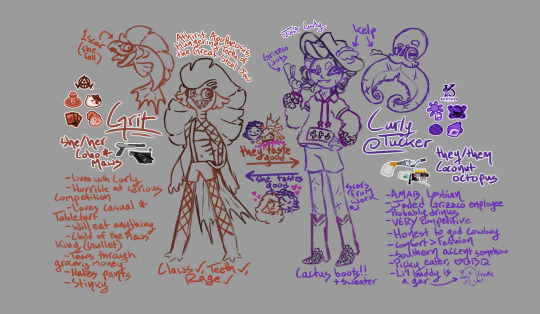
SPLAT OCS no way!!! I originally intended to fully color this sheet and all that, but after fighting tooth and nail with my art program to keep this file from corrupting, I’m just gonna save colors and whatnot ‘till the next time I draw them. One of em is filled with sodium and the other is a cowboy. Both of them reside in an apartment in Splatsville together, alongside a couple other roommates. They are in fish love!!!
Grit (Athirst Apotheosis, Hungering Teeth of the Great Steel Jaw) // She/her // Adult // Salmonling - Signature color is orange; she has silver and pink scales? Skin? Whatever it is it’s always at least a little grimy - Grew up near cephalopod society and in Splatlands sewers, hence mimicking their humanoid forms. Followed Curly back to Splatsville to become FRESH - Born in the maws ancestry to Gullet. Gullet’s a big ol dune-worm style king that swims beneath the map and swallows up large chunks of it as her main gimmick. Grit’s swim form shows off this heritage a lot better. Chomp - The salmonids’ race-wide death-food cult is more distant from her, but not entirely separated. She continues to cherish food and doesn’t mind participating in turf wars and such despite being shit and dying* constantly - Smells bad, dresses bad, literally eats garbage. Rabid - Fishnets lol. Always barefoot - Was nicknamed Grit by Curly after she held their hand and they went “ew this is gross why are you sticky” - HUGE casual. Never ever ever plays ranked, wouldn’t touch Grizzco with a ten foot pole. She plays turf whenever she feels like it, tableturf when she doesn’t, and otherwise just dicks around with the shell out machine and steals from the concessions. She has several pokemon-style binders for her tt card collection Curly J. Tucker // They/them // Adult // Octoling - Signature color is purple; they’re very dark skinned and plastered with the sort of web patterning you can find on coconut octopi - Can glow like coconut octopi!!! - Initially COULD NOT tolerate Grit. There’s a fish in their home taking all their money and food help. Fell in love slow-burn style, but Grit is a dumbass and eventually they just had to express their feelings explicitly - Continues to work at Grizzco after Grit. No Grit does not give a single shit - Coveredddd in scars from Grizzco, but it’s paid off; they have a max pay grade, they’re terrific at their job, and they have an apartment chock full of documents, trophies, and gear for work - Suuuper tired all the time thanks to both Grizzco and Alterna (Curly is my personal neo agent 3). Try to relax using ranked, but ends up getting even more exhausted and frustrated anyway. They recharge via Grit snuggles - Splatfest extraordinaire. Absolutely try hard bonkers for any big competition like this. Will come home miserable of their team doesn’t win - Always wears comfy clothes. Has the Texas curse of temperature confusion, hence the sweater and shorts - Bite mark on their hand is from Grit - The hat does NOT COME OFF. They originate from a distant Splatlands town notable for their skill ranching Zapfish and other silly goofy sea livestock, and they make it known 100% of the time Other notes * - In my personal canon getting splatted, falling in water, getting fucked up in ANY way in Splatoon is dying in a different sort of way. Getting your molecules dicked up or something, but not a permanent death, hence being able to revive. Maybe think the way immortal jellyfish are able to revert to earlier cell stages to escape death? - They both live in a big ol flat with another octoling gal owned by my friend @squidgobbler34 and a huge ribbon eel guy named Ruben. She is addicted to squid alt rock and he is long n fat and takes up so much space. He lines every wall of the apartment but its ok bc he’s good for snuggles
#splatoon#splatoon 3#splatoon ocs#salmonling#octoling#splatoon salmonid#splatoon octoling#splatlands#my art#art#ocs#splatoon fanart#oc reference#oc ref#Grit#Curly#woagh. sketches!!!#unbelievable
31 notes
·
View notes
Text
Self-searching: Vingarden Wu presents 'AMOMENTO: Pearl Roots II' , photographed by Maya Sørensen. January/2024.

In a dazzling fusion of tradition and contemporary eco-conscious fashion, our latest collection, presented by the visionary Vingarden Wu, unfolds 11 looks, each weaving a distinctive story that resonates with the soul. Inspired by the enchanting world of traditional Korean folk art known as "Minhwa," Wu's personal journey adds a unique depth to the narrative.

For this one, Wu shares, "I wanted to share a personal experience with my beloved grandmother, and her awe-inspiring interpretation of life. When I was just a little girl in my '한복' (han-bok), she inspired me to be something that came from within my soul, and that truly spoke for me what words could never express."

Wu's grandmother hailed from a family of '해녀' (hae-nyeo), female divers in the South Korean province of Jeju. They are known for their independent spirit and determination, representing the semi-matriarchal family structure of Jeju. Wu fondly recalls, "When I first encountered a Haenyeo, she was just coming back to shore in her black scuba diving gear with all these corals, shellfish, and treasures she found. That was very inspiring. She looked like some mythical creature; it was just so amazing."


This personal connection translated into key aquatic themes within the collection, featuring coral and shell-shaped gowns alongside black bodysuits reminiscent of scuba and wetsuit gear. Motifs derived from both flora and fauna, as well as otherworldly discoveries beneath the water's surface.

Drawing from her grandmother's breathtaking Korean madreperola dressing table, Wu reminisces about the beautiful memories. The collection incorporates Abaca banana tree fabric from the Philippines, commonly used for ship ropes and fish nets, along with deadstock and recycled Preciosa crystals.

Wu, a sino-Korean artist, reveals her cultural background, stating, "My mother is Chinese, and my father is South Korean. Despite growing up closer to Chinese culture, I still have a significant Korean heritage present in my life."

Looking towards the future, Wu emphasizes her commitment to sustainability, expressing, "It requires a lot of study, so it's not something that I could accomplish in one season. It's gonna be something that's a gradual process, but hopefully for the next few years, I want to go full sustainable and develop and source more sustainable ways and sustainable materials to create my masterpieces."

As each look unfolds, a story of conscientious design, personal heritage, and cultural richness emerges, bringing to life a harmonious blend of tradition and sustainability. The collection invites fashion enthusiasts to embrace the artistry of Minhwa, woven with threads of tradition, and propelled forward with a commitment to a sustainable future.

Production Credits:
Photography by Maya Sørensen.
Styling by Vingarden Wu.
Makeup by Kumi Craig.
Hair by Louis Ghewyn.
2 notes
·
View notes
Text
The History and Evolution of Costume Jewellery
Costume jewellery, also known as fashion jewellery, has a rich and fascinating history that spans centuries. This article explores the evolution of costume jewellery, from its origins to its modern-day popularity. We'll delve into the historical significance, cultural influences, and the materials used to create these beautiful adornments.
Early Origins of Costume Jewellery
Costume jewellery's history can be traced back to ancient civilizations, such as Egypt, where both men and women adorned themselves with colorful and intricate jewelry. These early pieces were often made from materials like beads, shells, and semi-precious stones. They were used not only as decorative items but also as symbols of social status and religious significance.
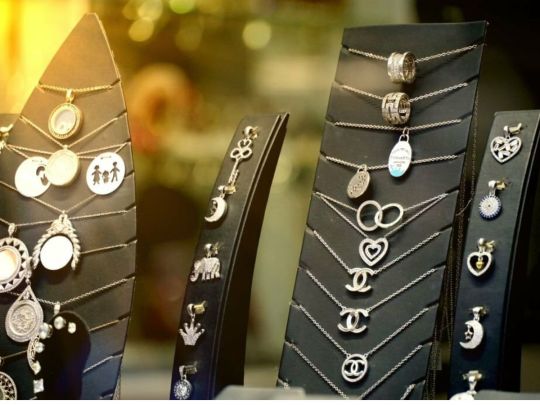
Renaissance and Baroque Eras
The Renaissance and Baroque eras brought about a resurgence of costume jewellery in Europe. During these periods, elaborate and ornate designs were created using various materials like glass, enamel, and faux gemstones. The growing popularity of masquerade balls and theatrical performances further fueled the demand for costume jewellery.
19th Century: The Birth of Costume Jewellery
The 19th century saw the birth of the costume jewellery industry as we know it today. With the Industrial Revolution, manufacturers started producing affordable, mass-produced jewellery. This allowed a broader audience to access fashionable accessories, regardless of their social class.
Art Nouveau and Art Deco Movements
The Art Nouveau movement of the late 19th and early 20th centuries brought a shift towards more natural and organic designs. Costume jewellery pieces featured motifs inspired by nature, such as flowers, insects, and animals.
In contrast, the Art Deco movement that followed embraced geometric shapes and bold, modern designs. This era introduced the use of materials like Bakelite and plastics, making jewellery even more accessible and affordable.
Mid-20th Century: Hollywood Glamour
The mid-20th century marked a period of Hollywood glamour, and costume jewellery played a significant role in this era. Film stars and celebrities popularized large, statement pieces, often adorned with rhinestones, faux pearls, and colored glass. These accessories added a touch of elegance and extravagance to the silver screen.
Contemporary Costume Jewellery
In the present day, costume jewellery continues to evolve. Modern designers experiment with a wide range of materials, including recycled and sustainable options. Costume jewellery is no longer confined to formal occasions; it has become an integral part of everyday fashion. If you're interested in the latest trends in Fashion Jewellery, be sure to check out for a wide selection of stylish options.
The Popularity of Costume Jewellery
Costume jewellery's popularity lies in its versatility and affordability. It allows people to express their style and follow trends without breaking the bank. Its role in self-expression and fashion is significant, making it a staple in the accessory industry.
Materials and Craftsmanship
The materials used in costume jewellery have evolved over time. While early pieces incorporated natural materials, contemporary designers use a combination of plastics, metals, and faux gemstones. The craftsmanship has also improved, with intricate detailing and high-quality finishes becoming common.
Costume Jewellery Around the World
Different cultures have contributed to the diversity of costume jewellery. From the intricate beadwork of African tribes to the vibrant colors of Indian costume jewellery, these adornments reflect the heritage and traditions of various societies.
Collecting Costume Jewellery
Many collectors appreciate the historical and artistic value of costume jewellery. Some pieces from the past have become valuable collectors' items. It's essential to learn about the history and craftsmanship of these items when considering collecting costume jewellery.
Conclusion
The history and evolution of costume jewellery are a testament to its enduring appeal and adaptability. From ancient civilizations to modern runways, costume jewellery has continued to captivate and inspire. Its affordable luxury and role in self-expression ensure that it will remain a fashion staple for years to come.
Frequently Asked Questions
1. What is costume jewellery?
Costume jewellery, also known as fashion jewellery, is a type of jewelry that is made using non-precious materials and is primarily worn for decorative purposes.
2. Is costume jewellery valuable?
While costume jewellery is not made from precious materials, some vintage and antique pieces can be valuable, especially if they are well-preserved and have historical significance.
3. How has costume jewellery changed over time?
Costume jewellery has evolved from simple beadwork and natural materials to incorporate a wide range of materials, including plastics, metals, and faux gemstones. It has also become more affordable and accessible.
4. Are there famous designers of costume jewellery?
Yes, there are several renowned designers in the world of costume jewellery, such as Coco Chanel, Miriam Haskell, and Kenneth Jay Lane, who have left a significant mark on the industry.
5. What are the latest trends in costume jewellery?
Contemporary costume jewellery trends include sustainability, with designers using recycled materials, as well as a focus on bold and unique designs that allow individuals to express their personal style.
2 notes
·
View notes
Text

The symbolism of a scallop shell has been with us humans since the very beginning of our civilization,in our mythology and religious beliefs specially Christianity. Seashells in general have been collected and used as currency, in many cultures.The magnetic signature of seashells is connected to the very beginnings of our universe.The sacred geometry of shells transcend the physical realm and digs deeper into the spirituality of men.Seashells are part of our heritage transmitted in the arts ,we find designs in architecture,painting,sculptures,designs,etc. As a beachcomber I feel connected to seashells and whenever I can ,I escape to the coast in search of these beauties.Words and pic by Sergio GuymanProust.
#seashells#scallop shells#nature#beachcomber#The religious meaning of a scallop shell#my photography#words and pic by sergio guyman proust
2 notes
·
View notes
Text
Top 10 Things to Do in Downtown Corpus Christi, TX
Introduction
Welcome to downtown Corpus Christi, TX! This vibrant city has so much to offer visitors, from beautiful beaches to delicious cuisine. Whether you're a local looking for something new to do or a tourist exploring the area, there are plenty of activities and attractions to keep you entertained. In this article, we'll explore the top 10 things to do in downtown Corpus Christi, TX.
Explore the Bayfront Park
One of the best ways to start your visit to downtown Corpus Christi is by exploring the Bayfront Park. This scenic park offers stunning views of the bay and is perfect for a leisurely stroll or a picnic with family and friends. Don't forget to bring your camera along to capture the beautiful sunsets over the water.
Sub-Visit the USS Lexington Museum
Located in benefits of fat freezing Bayfront Park, the USS Lexington Museum is a must-visit attraction in downtown Corpus Christi. Step aboard this retired aircraft carrier and explore its fascinating history through interactive exhibits and guided tours. From the flight deck to the engine room, you'll get an up-close look at life on board this impressive ship.
Sub-Enjoy Water Sports at North Beach
If you're looking for some fun in the sun, head over to North Beach. This popular spot offers a range of water sports activities, including jet skiing, kayaking, and paddleboarding. You can also relax on the sandy shores and soak up the Texas sunshine.
Immerse Yourself in History at The Art Museum of South Texas
For art enthusiasts, a visit to The Art Museum of South Texas is a must. This museum showcases a diverse collection of contemporary and modern art from both local and international artists. Take your time exploring the galleries and admiring the unique artwork on display.
Sub-Discover Local History at the Corpus Christi Museum of Science and History
Delve into the rich history of Corpus Christi at the Corpus Christi Museum of Science and History. This museum features exhibits on everything from the local wildlife to the city's role in World War II. Don't miss the chance to see artifacts and learn about the area's unique past.
Sub-Step Back in Time at Heritage Park & Cultural Center
Located in downtown Corpus Christi, Heritage Park & Cultural Center is a living history museum that takes you back in time. Explore historic buildings, including Victorian homes and a blacksmith shop, and learn about the city's early settlers. This interactive experience is perfect for families and history buffs alike.
Indulge in Local Cuisine
No visit to downtown Corpus Christi is complete without trying some of the local cuisine. From fresh seafood to mouthwatering Tex-Mex, there's something for everyone's taste buds.
Sub-Feast on Fresh Seafood at Water Street Oyster Bar
Water Street Oyster Bar is a beloved seafood restaurant in downtown Corpus Christi. Indulge in delicious fried shrimp, oysters on the half shell, or their famous seafood gumbo. With its casual atmosphere and waterfront views, this eatery is a favorite among locals and visitors alike.
youtube
Sub-Savor Authentic Tex-Mex at Kiko's Mexican Food Restaurant
For a taste of authentic Tex-Mex cuisine, head over to Kiko's Mexican Food Restaurant. This family-owned eatery has been serving up delicious dishes for over five decades. From sizzling fajitas to cheesy enchiladas, every bite is packed with flavor.
0 notes
Text
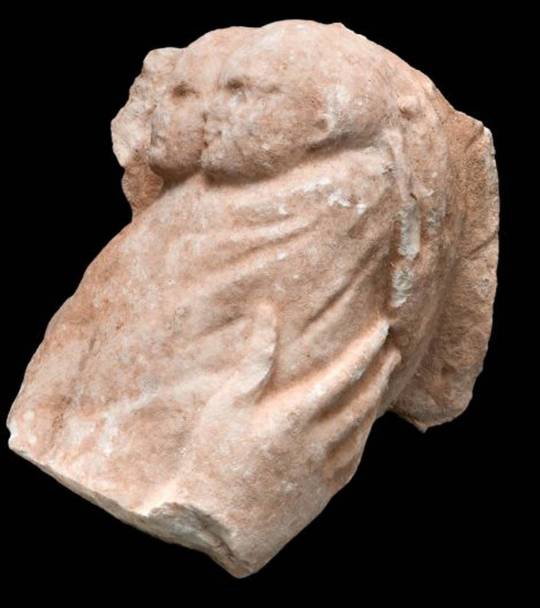
A Rare Marble Carving Depicting Twins Goes on Display
Years after a rare Greek marble was discovered, the unique find is finally on display for the world to see.
In November 2008, a man went to the National Archaeological Museum with a bundle of cloth, the museum said in a March 22 news release.
He said he was a shell collector and discovered the bundle while rooting around a stream in Menidi, on the west coast of Greece.
Archaeologists took the bundle, made from old clothes, and found a fragment of a marble carving inside, the museum said.
The archaeologists were surprised by the depiction, according to the museum.
The carving showed two babies wrapped in the arms of a woman, a rare type of funerary stele.
The funerary stele, carvings associated with tombs and headstones, likely belonged to a woman who died during childbirth, the museum said. The babies, twins in the same arms, represented their shared fate as orphans, according to the archaeologists.
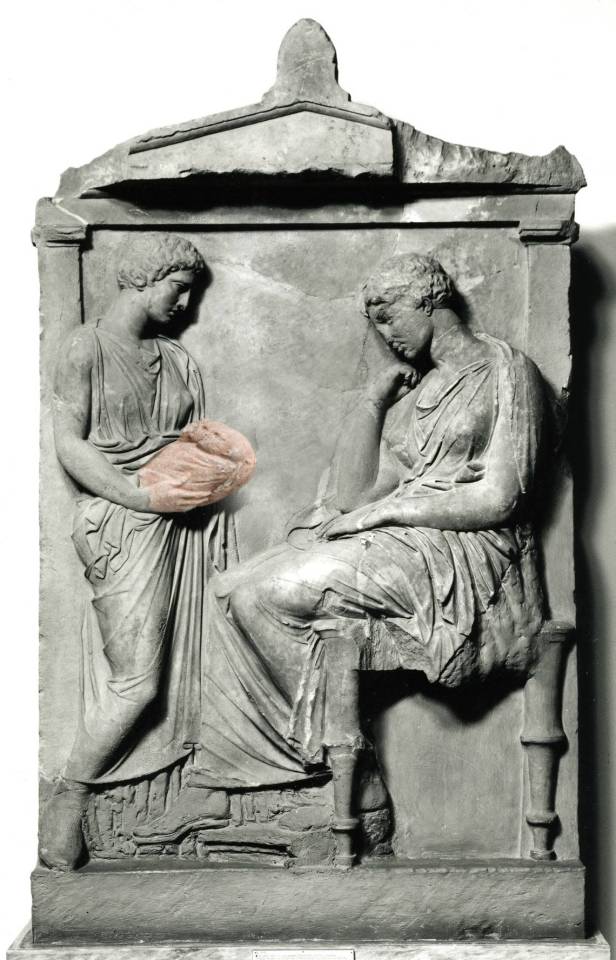
The marble section would have been part of a larger image showing the mother, the museum said.
The discovery is likely from the 4th century B.C., museum archaeologists said, and it is the only known surviving stele to depict twins.
The imagery of twins in Ancient Greek art itself, however, is not rare, Heritage Daily reported. Leto, the mother of twins Artemis and Apollo, is often used as a symbol of motherhood and a maternal goddess in images with her children.
The stele is now on display as part of a larger museum collection, called the Unseen Museum.
The museum said the exhibit “brings to the fore antiquities stored in its vaults, away from the visitor’s eyes,” according to the release.
The exhibit runs until May 13 in Athens, Greece.
By Irene Wright.
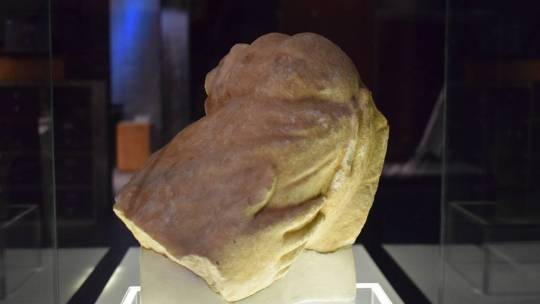
#A Rare Marble Carving Depicting Twins Goes on Display#Menidi#funerary stele#marble#marble statue#ancient artifacts#archeology#archeolgst#history#history news#ancient history#ancient culture#ancient civilizations#ancient greece#greek history#greek art
28 notes
·
View notes
Text
Lambani Embroidery Saree Online: Discover the Artistry and Culture
The intricate art of Lambani embroidery is an iconic and cherished part of India’s textile heritage. For those seeking this beautiful garment, finding a Lambani Embroidery Saree online has never been easier, with a range of unique, handcrafted sarees available to enthusiasts worldwide. Characterized by vibrant colors, mirror work, and intricate stitches, each Lambani saree is a canvas that tells a story of culture, skill, and tradition.
This traditional craft, rooted in the Lambani (also known as Banjara) community of Karnataka, holds a prominent place in India’s fashion landscape. With its growing popularity, many fashion platforms now showcase Lambani Embroidery Sarees online, making this art form accessible to a global audience while supporting the skilled artisans who create each piece.
What Makes Lambani Embroidery Unique?
Lambani embroidery stands out for its vibrant, bold designs and intricate craftsmanship. Artisans use a combination of stitches such as herringbone, chain stitch, and mirrorwork to create patterns that range from geometric designs to nature-inspired motifs. These sarees typically feature an array of colors, with red, blue, yellow, and green being prominent choices. Mirrors, beads, and shells often adorn the saree, adding texture and a touch of sparkle.
This embroidery style reflects the cultural identity of the Lambani people. Traditionally, Lambani women wore these colorful, embellished garments as part of their everyday attire. Now, Lambani embroidery has found its place in contemporary fashion, particularly for festive and cultural events.
The Benefits of Buying Lambani Embroidery Saree Online
As more people look for unique and culturally significant fashion choices, the demand for Lambani Embroidery Sarees online has increased. Purchasing these sarees online offers several advantages:
Wider Selection: Online stores provide access to a vast collection of Lambani Embroidery Sarees, from traditional to contemporary styles. This wide selection allows buyers to find the perfect saree to match their personal style and the occasion.
Support for Artisans: Many platforms that sell Lambani Embroidery Sarees online work directly with artisans or artisan cooperatives. This direct-to-consumer approach ensures that the artists receive fair compensation, helping to preserve this ancient art form and improve the livelihoods of the artisans.
Convenience: Finding Lambani Embroidery Sarees online means that buyers can browse, compare, and purchase from the comfort of their homes, with many platforms offering customization options as well.
Certified Quality: Many online platforms that specialize in traditional crafts authenticate their products, ensuring that buyers receive an authentic piece of Lambani artistry rather than mass-produced replicas.
How to Identify Authentic Lambani Embroidery
When searching for a Lambani Embroidery Saree online, there are a few aspects to look out for to ensure authenticity:
Hand-Stitched Embroidery: Authentic Lambani embroidery is typically hand-stitched. The stitches are slightly uneven, and the fabric may contain slight imperfections, which add to its unique charm. If the embroidery appears too uniform or precise, it may have been machine-stitched.
Vibrant Colors and Traditional Motifs: Lambani sarees usually feature bright colors and cultural patterns, including motifs inspired by nature and geometric shapes. Traditional Lambani sarees incorporate beads, shells, and mirrorwork as embellishments.
Natural Dyes and Fabrics: Traditional Lambani sarees use natural dyes, which give them a rich, earthy look. The fabrics are usually cotton or silk, providing durability and a comfortable fit.
Artisan Profiles: Reputable online platforms often share the profiles of artisans involved in creating their sarees. Learning about the artist’s background adds to the saree’s cultural value and authenticity.
How Lambani Embroidery Saree Online Shopping Supports a Sustainable Industry
The availability of Lambani Embroidery Sarees online has opened a new market for these artisan communities, contributing to their economic stability. When purchasing from verified online stores, buyers actively support a sustainable fashion industry. This not only preserves a part of India’s heritage but also promotes eco-friendly practices. Lambani sarees are often made with natural dyes and sustainable fabrics, reflecting the community's respect for the environment.
Additionally, the rise of ethical fashion platforms ensures that the artisans receive fair wages and work in safe environments. By buying a Lambani Embroidery Saree online, customers help create demand for ethical and sustainable products that have a positive impact on both people and the planet.
Styling Tips for Lambani Embroidery Sarees
Lambani Embroidery Sarees can be styled in many ways to suit both traditional and contemporary occasions. Here are some ideas:
Traditional Look: Pair your Lambani saree with a simple blouse to let the embroidery take center stage. Opt for silver or oxidized jewelry to complement the saree's ethnic look.
Festive Attire: Lambani sarees are perfect for festive occasions. Match them with a contrasting blouse and bold jewelry for a striking look. A traditional belt, or kamarband, can be added for extra elegance.
Contemporary Twist: For a modern look, pair your saree with a trendy crop top or a tailored blouse. Minimal jewelry will help balance the boldness of the embroidery, making it suitable for semi-formal occasions.
Mixing Textures: Lambani sarees pair beautifully with other handcrafted accessories, such as embroidered clutches or beaded footwear, enhancing the saree's vibrant character.
Where to Find Lambani Embroidery Saree Online
There are numerous platforms that offer authentic Lambani Embroidery Sarees online, ranging from specialized craft sites to larger e-commerce platforms. When choosing a platform, look for one that supports artisan communities directly, offers product authentication, and provides detailed descriptions of the saree’s origin and making process. Many artisan cooperatives also have their own online stores, ensuring that your purchase directly supports the artisans.

0 notes
Text
Discover the Best Shopping Experience in Maui, Hawaii
Maui is known for its stunning beaches, tropical landscapes, and rich cultural heritage, but what many visitors may not realize is that it's also a premier shopping destination. Whether you're searching for local crafts, high-end fashion, or unique souvenirs, Maui offers various shopping opportunities that cater to all tastes. From bustling marketplaces to quaint boutiques, the island is filled with treasures waiting to be discovered. This guide will explore the best places to shop in Maui and what makes each spot special.

Local Artisan Markets
If you're looking to take home something authentically Hawaiian, Maui's local artisan markets are the perfect place to start. These markets feature handmade goods, from jewelry and artwork to pottery and woven items. Shopping in Maui not only gives you a chance to support local artists but also allows you to bring home a piece of Maui's vibrant culture.
At these markets, you can find one-of-a-kind creations made from locally sourced materials, such as koa wood carvings, traditional Hawaiian quilts, and vibrant floral prints. Many vendors are happy to share the stories behind their creations, giving you deeper insight into Hawaiian craftsmanship.
Upscale Shopping Centers
For those who prefer luxury shopping, Maui has several upscale shopping centers featuring a blend of high-end brands and island-inspired boutiques. These centers offer an elevated shopping experience, with beautifully landscaped grounds and scenic views that add to the ambiance.
Luxury fashion, jewelry, and accessories are readily available, along with curated boutiques offering stylish resort wear. You can also find fine art galleries showcasing works by both local and international artists. Whether you're looking for designer pieces or unique finds, these centers are the epitome of island sophistication.
Beachfront Boutiques
Shopping in Maui often comes with the added bonus of breathtaking ocean views, especially at the island's many beachfront boutiques. These shops blend the laid-back vibe of beach living with the island's inherent style, offering clothing, swimwear, and accessories perfect for your Hawaiian getaway.
Many beachfront boutiques feature tropical prints, breezy fabrics, and vibrant colors that reflect the island's beauty. It's also easy to find Hawaiian-inspired jewelry, including pieces made from pearls, shells, and natural stones. The relaxed atmosphere makes it a pleasure to browse and shop for vacation wear or gifts to take home.
Farmers' Markets and Local Food Shops
Maui's farmers' markets and local food shops are a must-visit if you're a foodie. These markets are brimming with fresh, locally grown produce, from exotic fruits like dragon fruit and guava to famous Hawaiian coffee. You can also find gourmet products like jams, chocolates, and spices that make perfect gifts or souvenirs.
Many markets feature local food vendors serving traditional Hawaiian dishes and snacks in addition to produce. These shopping experiences offer a unique taste of the island, letting you sample the flavors of Maui while supporting local farmers and businesses.
Craft and Specialty Shops
Maui has numerous craft and specialty shops that highlight the island's unique offerings. Whether you're searching for eco-friendly products, handcrafted souvenirs, or artisanal foods, these shops provide an array of thoughtfully curated items. You can often find Hawaiian-themed home decor, natural beauty products, and even sustainable clothing made from organic materials.
These specialty shops make discovering unique gifts and items you won't find anywhere else easy. Whether you're searching for a memento of your trip or a meaningful present for someone back home, these carefully curated collections are sure to impress.
Outdoor Markets and Swap Meets
For a more casual shopping experience, outdoor markets and swap meets are popular among locals and visitors. These open-air markets offer diverse goods, from secondhand treasures to local crafts and souvenirs. The atmosphere is lively, and bargaining is often encouraged, making it a fun and interactive shopping experience.
These markets offer a wide variety of items, including clothing, jewelry, and artwork. They're also a great place to discover locally made products like soaps, lotions, and candles. Swap meets allow one to mingle with locals and experience Maui's community spirit firsthand.
Supporting Local Businesses
One of the best parts of shopping in Maui is the opportunity to support local businesses. Many of the island's shops, boutiques, and markets are family-owned or operated by local entrepreneurs, and when you shop with them, you're helping to sustain the local economy. Whether purchasing handmade jewelry from a local artisan or picking up fresh produce from a farmers' market, your support makes a difference.
Whether looking for high-end fashion, handcrafted souvenirs, or fresh local produce, shopping in Maui offers something for everyone. Each shopping destination, from upscale malls to local markets, provides a unique experience that reflects the island's culture, beauty, and creativity. No matter where you shop, you'll find something special to take home from your trip.
So, the next time you find yourself in Maui, take a break from the beach and dive into the island's vibrant shopping scene. Whether hunting for luxury items or handmade crafts, Maui's diverse selection of shops will make your shopping experience truly unforgettable.
0 notes
Text
Traditional Recipes Featuring Piñon Nuts in Apache Cuisine

Image generated by the author
The Heart of Apache Cuisine: Celebrating Piñon Nuts
The Scent of Tradition As the sun dips below the rugged horizon of the Southwest, a warm breeze carries with it the earthy aroma of roasted piñon nuts wafting from a nearby gathering. Families come together, hands stained with the remnants of a day spent foraging, laughter mingling with the crisp air, as they prepare to share a meal steeped in history and tradition. What is it about these small, unassuming nuts that weaves such a rich tapestry of culture, community, and sustenance? For the Apache people, piñon nuts are not just a food source; they are a vital thread in the fabric of their culinary heritage, embodying stories of resilience, connection, and reverence for the natural world.
Traditional Food: A Communal Feast
Piñon nuts, harvested from the evergreen piñon pine trees dotting the arid landscape, are a cherished staple in Apache cuisine. Their rich, buttery flavor and high nutritional value make them a prized ingredient, but their significance runs much deeper. The act of harvesting these nuts is a communal activity, a celebration that fosters connections among families and with the land itself. During the harvest, laughter echoes through the trees as children scurry about, collecting the fallen nuts, while elders share stories of the past, imparting wisdom learned through generations.
One can imagine the sight: baskets overflowing with glistening, brown nuts, their fragile shells holding the promise of nourishment. These gatherings are not merely about food; they are about preserving Apache traditions and passing them down, ensuring that the profound respect for nature and its bounty lives on in the hearts of the younger generation.
Culinary Heritage: The Art of Cooking with Piñon Nuts
The innovation within Apache cooking is evident in the traditional recipes that showcase piñon nuts. From hearty stews to delicate pastries, every dish tells a story. The nuts' rich flavor enhances a variety of meals, serving as a bridge between the physical and spiritual realms. One cherished recipe is the Piñon Nut Stew, a hearty concoction where tender pieces of meat meld with spices and the nutty crunch of piñon, creating a meal that warms both body and soul.
Another beloved dish is Piñon Nut Bread, often baked for special gatherings. The bread, infused with crushed piñon nuts, becomes a symbol of togetherness—a literal and figurative staple of the Apache table. And who could forget the sweet delight of Piñon Nut Pudding? Made from crushed nuts and cornmeal, this dessert is a festive treat, often prepared during celebrations, embodying the joy and spirit of Apache culture.
Each recipe is a testament to the ingenuity of Apache cooking, reflecting a profound respect for the ingredients sourced from their environment. The rituals surrounding meal preparation and sharing elevate eating to a spiritual experience, where food becomes a medium for connection, storytelling, and remembrance.
Historical Context: The Role of Native Nuts
The historical reliance of the Apache on their natural surroundings for sustenance is a compelling narrative of resilience and adaptability. Piñon trees have long served as a vital resource in the Southwest, their nuts providing nourishment and sustenance in a harsh landscape. The gathering of these nuts is a practice that transcends mere survival; it is an act imbued with reverence for nature.
With each harvest, the Apache people honor the land that sustains them. This deep connection to their environment fosters a sense of stewardship that is evident in their culinary practices. The sacredness of ingredients is a recurring theme in Apache cooking; piñon nuts, in particular, stand as a symbol of this relationship. Harvesting events often culminate in communal feasts where meals prepared with piñon nuts reflect not only the resourcefulness of Apache cuisine but also the respect for nature's gifts.
Cultural Significance: More Than Just Food
In Apache culture, food is not simply fuel; it is a vessel of spirituality and connection. Piñon nuts hold deep meaning, representing resilience and the bond between the people and their environment. Sharing meals enriched with these nuts fosters a sense of kinship, reinforcing community ties and shared identity.
Consider the story of Nixon, a skilled healer revered within his community. As the tale unfolds, Nixon leads a gathering of families to collect piñon nuts, a task that becomes a sacred ritual. The act of gathering transforms into a celebration of life, where the nuts symbolize sustenance, both physical and spiritual. As Nixon prepares a feast, every bite serves as a reminder of ancestral teachings—of patience, gratitude, and the importance of sharing.
This narrative illustrates how meals incorporating piñon nuts reverberate through Apache society, echoing the values of connection and respect for the earth. Each dish becomes a testament to the wisdom of generations, reminding all who partake of their heritage.
Practical Applications: Bringing Piñon Nuts to Your Table
Incorporating piñon nuts into modern diets is an accessible way to celebrate Apache culinary traditions while enhancing flavor and nutrition. Whether tossed into a vibrant salad, baked into cookies, or used as a crunchy topping for savory dishes, the versatility of piñon nuts invites creativity in the kitchen.
Imagine a fresh salad adorned with roasted piñon nuts, the nutty crunch complementing the crisp greens and vibrant vegetables. Or consider the warm, comforting aroma of freshly baked piñon nut bread, its golden crust inviting friends and family to gather around the table. The possibilities are as endless as the stories shared over these meals, each bite a nod to the Apache tradition.
Modern Relevance: A Returning to Roots
As modern consumers increasingly seek healthier, more natural food sources, traditional Apache recipes featuring piñon nuts resonate more than ever. These dishes not only offer nutritional benefits but also invite individuals to reconnect with the land and honor the wisdom of indigenous cultures. Sharing meals made with piñon nuts fosters connections across generations, creating a dialogue that transcends time.
In a world often disconnected from its roots, the culinary practices surrounding piñon nuts encourage a return to nature in our eating habits. They remind us of the importance of sustainability and respect for our environment, urging us to adopt values that honor the interconnectedness of all living things.
Conclusion: A Culinary Invitation
As we reflect on the significance of piñon nuts in Apache cuisine, we uncover a deeper connection to a culture rich in tradition and wisdom. Embracing these recipes is more than about enjoying delicious food; it is an invitation to share stories, preserve heritage, and celebrate the relationship between the land and its people.
So, the next time you encounter a piñon nut, remember—it's more than just a snack or an ingredient; it's a connection to a legacy of resilience, respect, and community. As you savor the flavors of Apache cuisine, consider the stories behind each dish and the cultural significance that enriches our shared human experience. In doing so, we honor not only the Apache people but also the natural world that sustains us all.
Further Exploration
To deepen your understanding of Apache culture and cuisine, consider exploring questions like: How do we honor ancestral traditions in our modern lives? How can we integrate ecological knowledge into our eating habits? And how do we celebrate the richness of tribal ceremonies? These inquiries not only foster appreciation for indigenous cultures but also encourage sustainable practices that benefit our planet.
About Black Hawk Visions
Black Hawk Visions preserves and shares timeless Apache wisdom through digital media. Inspired by Tahoma Whispering Wind, we offer eBooks, online courses, and newsletters that blend traditional knowledge with modern learning. Explore nature connection, survival skills, and inner growth at Black Hawk Visions.
AI Disclosure: AI was used for content ideation, spelling and grammar checks, and some modification of this article.
About Black Hawk Visions: We preserve and share timeless Apache wisdom through digital media. Explore nature connection, survival skills, and inner growth at Black Hawk Visions.
0 notes
Text
Antique Bronze Sculptures: A Timeless Art Form
Antique bronze sculptures have long captivated art enthusiasts and collectors with their timeless beauty and historical significance. These works of art, often created by master artisans, embody the rich cultural heritage and artistic ingenuity of ancient civilizations. From the intricate detailing to the patina that develops over centuries, antique bronze sculptures offer a glimpse into the past and continue to inspire awe and admiration.
Historical Significance
Bronze, an alloy primarily composed of copper and tin, was one of the first metals used by humans for artistic and functional purposes. The Bronze Age, saw the advent of bronze casting techniques that revolutionized art and craftsmanship. Civilizations such as the Greeks, Romans, Chinese, and Egyptians utilized bronze to create sculptures, tools, weapons, and ceremonial objects.
One of the most famous examples of antique bronze sculpture is the Greek statue known as "The Bronze Zeus" or "The Artemision Bronze," dating back to the early 5th century BCE. This statue, depicting either Zeus or Poseidon, showcases the high level of skill and artistry achieved by ancient Greek sculptors. Similarly, the Chinese bronze ritual vessels from the Shang and Zhou dynasties demonstrate the intricate designs and symbolic meanings attributed to bronze artworks in ancient China.
The Art of Bronze Casting
The process of creating bronze sculptures involves several steps, each requiring meticulous attention to detail. The most common method used by ancient artisans was the lost-wax casting technique. This method begins with the creation of a wax model of the desired sculpture. The wax model is then coated with a ceramic shell, which is heated to melt and remove the wax, leaving a hollow mold. Molten bronze is poured into the mold, and once cooled, the ceramic shell is broken away to reveal the bronze sculpture.
The lost-wax casting technique allowed for the creation of highly detailed and complex sculptures. Artists could achieve intricate textures, lifelike expressions, and dynamic poses that were not possible with other materials. The versatility and durability of bronze made it an ideal medium for both large-scale public monuments and smaller, intimate pieces.
Patina and Preservation
One of the most captivating aspects of antique bronze sculptures is the patina that develops over time. Patina refers to the surface changes that occur on bronze due to oxidation and other chemical reactions. This natural aging process can result in a range of colors, from deep browns and greens to rich blues and reds. The patina not only enhances the aesthetic appeal of the sculpture but also serves as a protective layer, preventing further corrosion.
Preserving antique bronze sculptures requires careful maintenance and conservation efforts. Museums and collectors often employ specialized techniques to clean and stabilize the bronze while preserving the patina. Environmental factors such as humidity, temperature, and exposure to pollutants can affect the condition of bronze sculptures, making proper care essential to their longevity.
Collecting and Appreciating Antique Bronze Sculptures
For collectors, antique bronze sculptures represent a valuable and tangible connection to the past. The rarity and historical significance of these pieces make them highly sought after in the art market. Collectors often seek out sculptures with well-documented provenance, as the history of ownership can add to the value and authenticity of the piece.
Beyond their monetary worth, antique bronze sculptures offer a unique opportunity to appreciate the craftsmanship and artistic vision of ancient cultures. Whether displayed in a museum, a private collection, or as a focal point in home decor, these sculptures continue to inspire and captivate viewers with their timeless beauty.
For More Info:-
Children Bronze Sculptures
Bronze Sculpture Children Playing
0 notes
Text
Fifth Generation Trading Co: Preserving Heritage Through Art and Craftsmanship
At Fifth Generation Trading Co, we are dedicated to preserving and promoting the rich cultural heritage of Native American art and craftsmanship. Our collection features an exquisite array of turquoise jewelry, Navajo rugs, Native American art, Southwest art, and Native American jewelry. Each piece in our collection is a testament to the skill, tradition, and creativity of Native American artisans, embodying centuries of tradition and a deep connection to the natural world.
The Allure of Turquoise Jewelry
Turquoise jewelry is not just a fashion statement; it is a symbol of protection, healing, and spiritual well-being. At Fifth Generation Trading Co, we offer a diverse collection of turquoise jewelry, including necklaces, bracelets, earrings, and rings. Each piece is handcrafted by skilled Native American artisans, who meticulously select and set the finest turquoise stones. The vibrant blue-green hues of turquoise have been cherished for centuries, and our collection celebrates this timeless appeal, blending traditional designs with contemporary styles.
Navajo Rugs: Weaving Stories Through Threads
The art of weaving Navajo rugs is a deeply revered tradition passed down through generations. Our selection of Navajo rugs showcases the intricate patterns and vibrant colors that are characteristic of this art form. Each rug tells a unique story, with designs inspired by the weaver's surroundings, experiences, and cultural heritage. The craftsmanship involved in creating these rugs is unparalleled, making each piece a valuable addition to any home. Whether you are looking for a small accent rug or a large centerpiece, our collection offers a wide range of options to suit your decor needs.
Celebrating Native American Art
Native American art encompasses a broad spectrum of mediums, including pottery, beadwork, paintings, and sculptures. At Fifth Generation Trading Co, we take pride in curating a collection that reflects the diversity and richness of Native American artistic expression. Our gallery features works from renowned artists as well as emerging talents, each piece offering a glimpse into the cultural narratives and artistic traditions of Native American communities. From the intricate beadwork of the Plains tribes to the vibrant pottery of the Southwest, our collection is a celebration of the artistry and heritage of Native American peoples.
Southwest Art: A Reflection of the Land
The unique landscape and vibrant culture of the American Southwest have inspired artists for generations. Southwest art captures the essence of this region, with its dramatic desert landscapes, rich colors, and diverse wildlife. At Fifth Generation Trading Co, our collection of Southwest art includes paintings, sculptures, and mixed media pieces that reflect the beauty and spirit of the Southwest. These works of art are perfect for adding a touch of Southwestern charm to your home or office, and they serve as a reminder of the natural beauty and cultural richness of this region.
The Timeless Appeal of Native American Jewelry
Native American jewelry is renowned for its intricate designs, quality craftsmanship, and use of natural materials. Our collection includes a wide variety of jewelry pieces, from statement necklaces and bold bracelets to delicate earrings and rings. Each piece is handcrafted by Native American artisans who draw on centuries-old techniques and traditions. Materials such as turquoise, silver, coral, and shell are often used, each selected for its beauty and cultural significance. Wearing Native American jewelry is not just about adornment; it is about honoring and connecting with a rich cultural heritage.
The Legacy of Fifth Generation Trading Co
At Fifth Generation Trading Co, we are committed to supporting Native American artists and preserving their cultural heritage. Our business is built on strong relationships with artisans and communities, ensuring that every piece we offer is authentic and ethically sourced. We believe in the importance of fair trade and providing a platform for Native American artists to share their work with a broader audience. By purchasing from Fifth Generation Trading Co, you are not only acquiring a beautiful piece of art but also contributing to the preservation of a vibrant cultural legacy.
The Art of Craftsmanship
The craftsmanship involved in creating turquoise jewelry, Navajo rugs, and other forms of Native American art is a testament to the skill and dedication of the artisans. Each piece is created with meticulous attention to detail, often requiring hours, days, or even months of work. The techniques used are often passed down through generations, preserving traditional methods while allowing for individual artistic expression. This combination of tradition and creativity results in unique, high-quality pieces that are cherished by collectors and art enthusiasts around the world.
Embracing Cultural Narratives
Every piece of Native American jewelry and Southwest art in our collection carries a story. These narratives are woven into the fabric of the art, reflecting the history, beliefs, and experiences of the artist and their community. At Fifth Generation Trading Co, we strive to honor these stories by sharing them with our customers. We provide information about the artists and the cultural significance of their work, helping to foster a deeper appreciation and understanding of Native American art.
A Commitment to Quality
Quality is at the heart of everything we do at Fifth Generation Trading Co. We carefully select each piece of turquoise jewelry, Navajo rugs, and Native American art to ensure it meets our high standards. Our commitment to quality extends beyond the products themselves to include exceptional customer service. We are dedicated to providing a positive shopping experience, offering expert advice, and ensuring that our customers are satisfied with their purchases.
The Future of Native American Art
The future of Native American art is bright, with a new generation of artists building on traditional techniques and pushing the boundaries of artistic expression. At Fifth Generation Trading Co, we are excited to support these emerging talents and provide a platform for their work. We believe that by celebrating and promoting Native American art, we can help preserve cultural heritage and inspire future generations of artists.
Conclusion
Fifth Generation Trading Co is more than just a store; it is a celebration of turquoise jewelry, Navajo rugs, Native American art, Southwest art, and Native American jewelry. Our collection reflects the rich cultural heritage and artistic traditions of Native American communities, offering unique and beautiful pieces that are sure to be cherished. By supporting Fifth Generation Trading Co, you are helping to preserve these traditions and support the artisans who keep them alive. We invite you to explore our collection and discover the beauty and significance of Native American art.
0 notes
Text
Ceremonial cache sexe from nigeria

The Dan Guere Mask from Liberia is a striking representation of African art, specifically from the Dan and Guere tribes of the region. These masks hold significant cultural and spiritual importance, often used in traditional ceremonies, festivals, and rituals. The masks are typically crafted from wood and decorated with various materials such as cowrie shells, feathers, and cloth, making each piece unique.
Glass bead necklace from Ghana are known for their intricate designs and expressive features. They often depict human or animal faces with exaggerated features such as large eyes, open mouths, and protruding foreheads. These elements are believed to embody spirits or ancestral beings, playing a crucial role in connecting the physical and spiritual worlds. The masks are used in masquerades, where masked dancers perform to communicate with spirits, seek protection, or ensure a bountiful harvest.
In addition to masks, several related products complement the cultural heritage of the Dan and Guere people. For instance, glass bead necklaces are popular adornments that add a touch of elegance to traditional attire. Mamadi Doumbouya, an artist renowned for his contemporary interpretations of African art, often incorporates traditional motifs in his work, offering a modern twist to cultural artifacts. Baskets, handwoven with intricate patterns, serve both functional and decorative purposes. The Lega Mask, another significant artifact from a neighboring tribe, shares a similar ceremonial significance. Shields, used in traditional warfare, and hand-carved Baga stools, known for their artistic designs and functionality, further exemplify the rich cultural tapestry of the region.
Collectively, these items highlight the profound artistry and cultural heritage of West Africa, with the Dan Guere Mask standing out as a symbol of spiritual and artistic expression.
0 notes